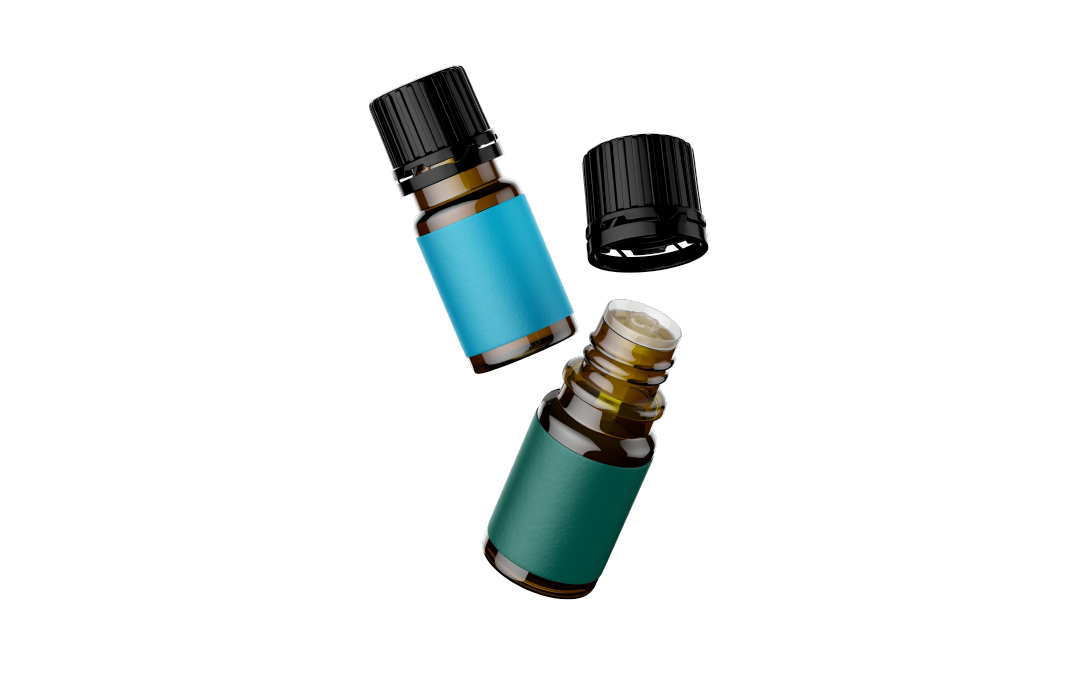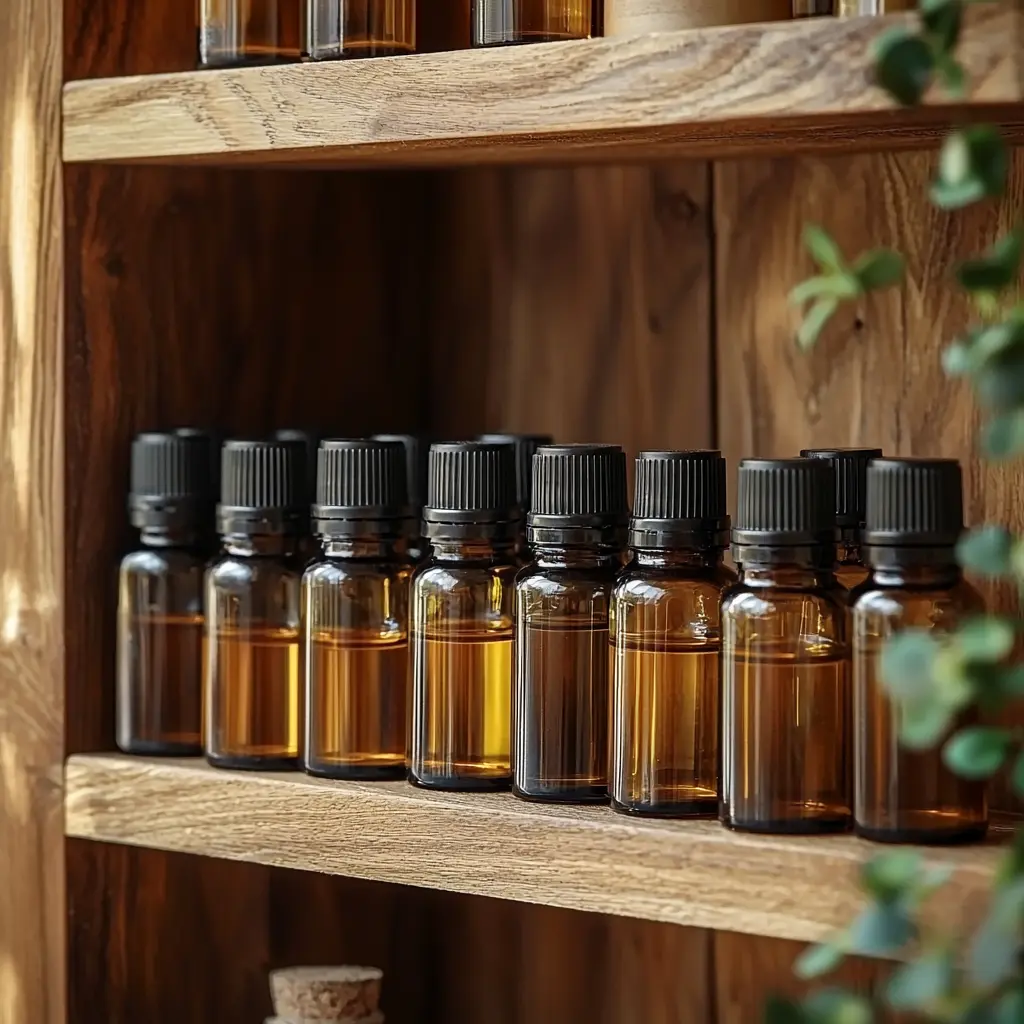Proper storage of essential oils
How to safely store essential oils?
Proper storage of essential oils is crucial for preserving their quality, aroma, and therapeutic properties. Due to the volatile nature of essential oils, improper storage can lead to oxidation, contamination, and deterioration, significantly reducing their shelf life.
Why is Proper Storage Important?
Essential oils are highly concentrated plant extracts. Over time, exposure to environmental factors such as heat, light, and air can cause them to oxidize and degrade. Oxidized oils not only lose their aroma and effectiveness but may also cause skin irritation or sensitization when used. Proper storage helps maintain their purity and potency, ensuring they remain safe and effective for use.

Key factors for storage of essential oils
Container Material
Essential oils should be stored in glass containers, preferably dark-colored ones such as amber or cobalt blue bottles. These dark bottles help protect the oils from light, which can accelerate oxidation.
Avoid Plastic Containers
Essential oils are potent and can dissolve plastic over time, leading to leakage and potential contamination from harmful chemicals leaching into the oil.
Exceptions
Oils diluted in carrier oils or cleaning solutions containing essential oils can be temporarily stored in plastic containers. However, even in these cases, long-term storage in plastic is not advisable.
Sealing the Bottles
Always ensure that the caps of essential oil bottles are tightly sealed after use. This minimizes air exposure, which can cause the oils to evaporate and oxidize. Properly sealed bottles also help retain the oils’ aroma and therapeutic properties.
Light Protection
Direct sunlight and exposure to bright light can break down the chemical compounds in essential oils, leading to faster oxidation. Therefore, it’s best to store essential oils in a dark, cool place, away from windows and sunlight.
Tip: Even though displaying essential oils on a sunny windowsill might look aesthetically pleasing, it’s not a suitable storage location.
Temperature Control
Heat is another factor that speeds up the degradation of essential oils. Store oils in a cool environment, ideally at a consistent room temperature. Avoid placing them near heat sources such as stoves, radiators, or candles, as essential oils are flammable and can pose a fire risk.
Extreme temperatures should be avoided. If you live in a hot climate, consider storing your essential oils in a refrigerator to extend their shelf life.
Warning, safety cautions
Essential oils are not intended to diagnose, treat, or prevent any disease, nor do they replace medications or therapies prescribed by a physician. They are not medicinal products and do not qualify as drugs. Based on experience, essential oils may have complementary therapeutic effects. If you are unsure about how an essential oil might affect you or your child, consult your general practitioner and/or a qualified aromatherapist. Before using any new essential oil (especially internally or directly on the skin), perform a patch test.
Signs of spoiled essential oils
Change in aroma
If the scent of the oil becomes unpleasant or drastically different from its original fragrance, it may have oxidized.
Change in color
A significant change in color, such as becoming darker or cloudy, can indicate spoilage.
Change in texture or consistency
If the oil becomes thicker or has visible particles floating in it, it’s likely no longer suitable for use.
Citrus oils – a special case
Woody oils
In contrast, oils derived from wood, such as sandalwood and cedarwood, can improve with age. Their aroma often becomes deeper and more complex over time.

Summary and best practices for storage of essential oils
Use dark glass bottles (amber or cobalt blue) to protect against light.
Store in a cool, dark place, away from sunlight and heat sources.
Always seal bottles tightly after use to prevent air exposure.
Avoid long-term storage in plastic containers.
Regularly check the oils for changes in scent, color, and texture.
By following these guidelines, you can significantly extend the shelf life of your essential oils and ensure they remain safe and effective for all your aromatic, therapeutic, and cleaning purposes.
Contact info
Author:
Roseware Kft. - Réka Rózsáné Illés
Affiliate programs
I am open to be the part of affiliate programs with essential oil manufacturers and sellers. Contact me!
Copyright info
Photos and texts on this website are subjects of copyright - the owner of the copyright is Roseware Kft. - Réka Rózsáné Illés. Do not use any of these without permission.
